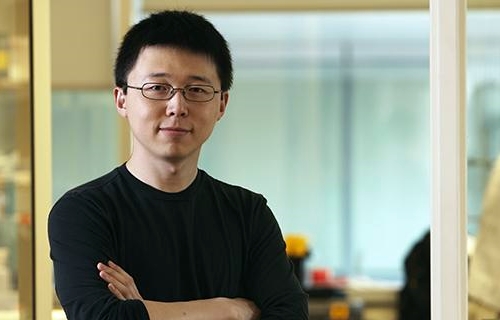25 September 2015. Researchers at the Broad Institute, a biomedical research center affiliated with Harvard University and MIT, revealed a simpler and potentially more accurate technique for editing mammalian genomes than used today. The team led by biomedical engineering professor Feng Zhang, a pioneer in genomic editing technologies at Broad Institute and MIT, published its findings today in the journal Cell (paid subscription required).
Zhang, with colleagues at Broad Institute and elsewhere, was one of the first researchers to use clustered, regularly interspaced short palindromic repeats or CRISPR, a technology based on bacterial defense mechanisms that use RNA to identify and monitor precise locations in DNA. Up to now, the actual editing of genomes with CRISPR uses an enzyme known as CRISPR-associated protein 9 or Cas9. With this approach to CRISPR, two RNA molecules guide Cas9 proteins to specific genes needing repair, making it possible to address root causes of many diseases.
In the study published today, Zhang and associates describe a new system that they say simplifies the CRISPR process. Instead of Cas9, the genome editing is performed with a CRISPR-associated protein known as Cpf1, an enzyme discovered in Acidaminococcus and Lachnospiraceae bacteria that the authors say is smaller than Cas9 and thus easier to deliver into cells and tissue.
A key feature of Cpf1, says the team, is it performs cleaner edits of DNA than Cas9 that uses the two RNA strands to cut the DNA. Cpf1 needs one strand of RNA for editing that results in less overhand in the DNA and less opportunity for mutations to develop. In addition, edits in genomes with Cpf1 are done further from the target site, allowing for corrective editing later on if needed. These Cpf1 features, say the authors, allow for more precise genomic editing, along with efficient and accurate placement of new DNA in the receiving genome.
Zhang is a founder of Editas Medicine, a spin-off company from Broad Institute, commercializing genomic editing technologies licensed from labs at MIT, Harvard, and elsewhere. As reported in Science & Enterprise, the company was founded in November 2013, and immediately attracted $43 million in venture financing. In March of 2015, Editas demonstrated its technology with repairs of mutations causing sickle cell disease, an inherited blood disorder.
Despite these commercial interests, the Broad Institute and MIT are making the new Cpf1 discoveries available to the research community at large. The institute says details of Cpf1 editing will be accessible from the Zhang lab Web sites, as well as affiliated AddGene.org and Genome-Engineering.org sites. Broad Institute and MIT also plan to offer non-exclusive licenses to enable commercial tool and service providers to add Cpf1 features to their portfolios.
“Our goal is to develop tools that can accelerate research and eventually lead to new therapeutic applications,” says Zhang in a Broad Institute statement. “We see much more to come, even beyond Cpf1 and Cas9, with other enzymes that may be repurposed for further genome editing advances.”
Read more:
- Seattle Children’s, Biotech Collaborate on Gene Editing
- Genome Editing Biotech Gains $70M in Venture Funds
- Broad, Google Partner on Genomic Analysis Platform
- National Academies to Develop Gene-Editing Guidelines
- Gene Editing Harnessed to ID Cancer Targets
* * *


 RSS - Posts
RSS - Posts
You must be logged in to post a comment.